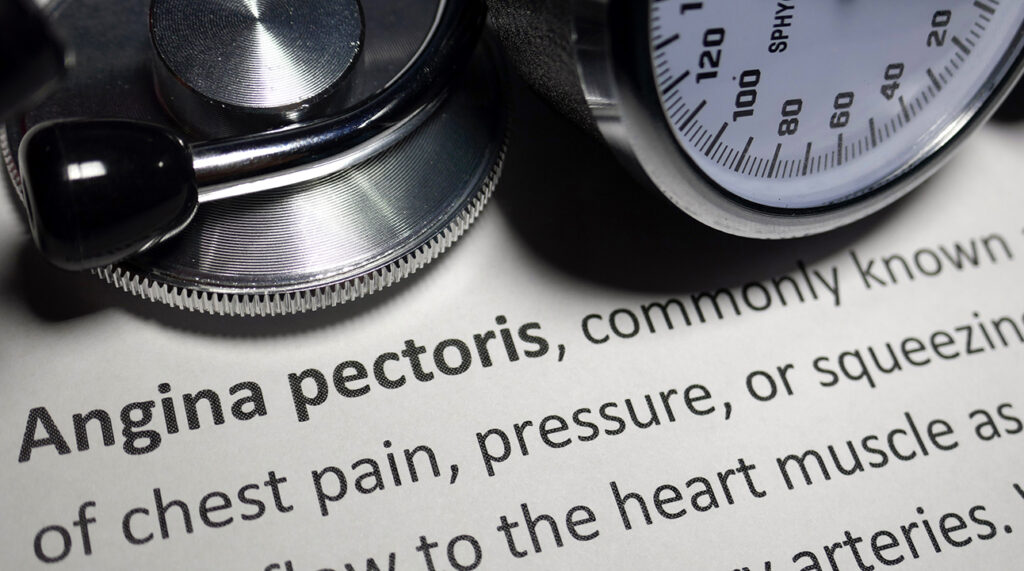Angina Pectoris Occurs When
Imagine feeling a sudden, sharp pain in your chest—this could be the telltale sign of angina pectoris, a condition that occurs when your heart doesn’t receive enough blood and oxygen. Angina pectoris is a serious health issue that should not be taken lightly, as it can be a precursor to a heart attack or other heart-related problems. Understanding the causes and symptoms of angina pectoris is crucial to seek prompt medical attention and take necessary measures to protect your heart health.
A real example
Angina Pectoris Occurs When
Cold Weather-Induced Angina:
Imagine a person with coronary artery disease facing cold weather. Cold temperatures can cause blood vessels to constrict, potentially reducing blood flow to the heart. This vasoconstriction, combined with the pre-existing narrowed coronary arteries, can trigger angina symptoms, leading to chest pain or discomfort.
Medication-Related Angina:
Angina Pectoris Occurs When
Consider an individual taking medication that affects blood pressure or heart function. Some medications may alter the balance between oxygen supply and demand in the heart muscle. If there’s an insufficient supply of oxygen to the heart due to narrowed coronary arteries, the person may experience angina as a side effect of the medication.
Exertion-induced Angina:
Angina Pectoris Occurs When
Imagine a person with coronary artery disease decides to engage in a brisk walk or run. As they increase their physical activity, the heart’s demand for oxygen rises. However, due to narrowed coronary arteries, the blood supply to the heart muscle becomes insufficient, leading to chest pain or discomfort during the exercise.
Emotionally-triggered Angina:
Angina Pectoris Occurs When
Consider a person with coronary artery disease who experiences intense emotional stress, such as a sudden shock or anxiety. Stress can cause the heart to work harder, increasing the demand for oxygen. If the coronary arteries are narrowed, this emotional stress can lead to angina symptoms, including chest pain and tightness.
Post-Meal Angina:
Angina Pectoris Occurs When
Picture an individual with coronary artery disease enjoying a large, heavy meal. Digestion requires increased blood flow to the stomach and intestines. In the presence of narrowed coronary arteries, this redirection of blood flow can temporarily reduce the supply of oxygen to the heart muscle, triggering angina symptoms, especially if the person overindulges in food.
Smoking-Related Angina:
Angina Pectoris Occurs When
Envision a person with coronary artery disease who is a smoker. Smoking can lead to the constriction of blood vessels and the formation of blood clots, further compromising blood flow to the heart. Smoking-induced vascular damage, combined with narrowed coronary arteries, may trigger angina symptoms, especially during or after smoking.
Morning Routine Angina:
Angina Pectoris Occurs When
Picture an individual with coronary artery disease waking up in the morning. The body experiences natural changes in blood pressure and heart rate upon waking. For someone with narrowed coronary arteries, this period of increased cardiovascular demand, combined with potential morning stress, can result in angina symptoms during the morning routine.
Unstable Angina during Rest:
Angina Pectoris Occurs When
Consider a person with coronary artery disease experiencing episodes of angina even at rest. Unstable angina can occur unpredictably and is often a sign of a more serious condition. It may be triggered by the formation of blood clots in the narrowed coronary arteries, leading to a sudden and severe decrease in blood flow to the heart, causing chest pain or discomfort.
Travel-Induced Angina:
Angina Pectoris Occurs When
Imagine a person with coronary artery disease embarking on a long journey, whether by car, plane, or train. Prolonged periods of sitting and reduced physical activity during travel can contribute to sluggish blood circulation. For someone with narrowed coronary arteries, this sedentary state may increase the risk of angina, especially if the journey is stressful or demanding.
Dehydration-Related Angina:
Angina Pectoris Occurs When
Picture an individual with coronary artery disease becoming dehydrated, perhaps due to inadequate fluid intake or excessive sweating. Dehydration can lead to a decrease in blood volume, potentially reducing blood flow to the heart. In the presence of narrowed coronary arteries, this dehydration-induced reduction in blood flow may trigger angina symptoms.
High Altitude-Induced Angina:
Angina Pectoris Occurs When
Consider a person with coronary artery disease ascending to a high altitude. At higher elevations, there is lower oxygen pressure, making it harder for the body to obtain sufficient oxygen. For individuals with narrowed coronary arteries, the decreased oxygen availability at higher altitudes may contribute to the development of angina symptoms, especially during physical exertion at elevation.

Angina Pectoris Occurs When
Angina Pectoris Occurs When
Definition and Overview
Angina pectoris, commonly referred to as angina, is a condition characterized by chest pain or discomfort that occurs when the heart muscle does not receive enough oxygen-rich blood. It is a symptom of an underlying heart condition, most commonly coronary artery disease (CAD). Angina is often described as a squeezing, tightness, heaviness, or pressure in the chest, but it can also radiate to the arms, neck, jaw, back, or shoulders. Understanding the causes, symptoms, and types of angina is crucial for early detection, effective management, and overall cardiovascular health.
Coronary Artery Disease
Angina Pectoris Occurs When
Definition:
Coronary artery disease (CAD), also known as coronary heart disease or atherosclerosis, is a cardiovascular condition characterized by the gradual buildup of fatty deposits, cholesterol, calcium, and other substances within the coronary arteries. These arteries are responsible for supplying oxygenated blood to the heart muscle.
Angina Pectoris Occurs When
Causes and Development:
The primary cause of CAD is a process called atherosclerosis. It begins when the inner walls of the coronary arteries are damaged. This damage can be caused by various factors, including smoking, high blood pressure, high cholesterol levels, and diabetes. Once the arterial walls are damaged, substances like cholesterol and inflammatory cells start accumulating at the site of injury.
Angina Pectoris Occurs When
Formation of Plaques:
Over time, these accumulating substances form plaques, which are fatty deposits that can harden and narrow the arteries. These plaques consist of cholesterol, inflammatory cells, calcium, and other cellular debris. As the plaques grow, they create a buildup on the inner walls of the arteries, causing them to lose their elasticity and flexibility.
Angina Pectoris Occurs When
Narrowing of Arteries:
As the plaques continue to develop and harden, they narrow the coronary arteries, reducing the space through which blood can flow. This narrowing restricts the amount of oxygen-rich blood that can reach the heart muscle. The process is often gradual, and individuals may not be aware of the condition until symptoms, such as angina, manifest.
Reduced Blood Flow and Angina:
The narrowing of the arteries results in reduced blood flow to the heart muscle. This diminished blood supply deprives the heart of the necessary oxygen and nutrients needed for its proper functioning. During periods of increased demand, such as physical exertion or stress, the heart muscle may not receive an adequate supply of oxygen, leading to the characteristic chest pain or discomfort known as angina pectoris.
Angina Pectoris Occurs When
Complications:
If left untreated, CAD can progress and lead to more severe complications, including myocardial infarction (heart attack). A heart attack occurs when a coronary artery is completely blocked, cutting off blood flow to a portion of the heart muscle. This can result in permanent damage to the heart tissue.
Angina Pectoris Occurs When
Management and Prevention:
Managing CAD often involves lifestyle modifications, such as adopting a heart-healthy diet, regular exercise, and quitting smoking. Medications may also be prescribed to control risk factors like high blood pressure and cholesterol levels. In some cases, medical procedures such as angioplasty or coronary artery bypass grafting (CABG) may be recommended to improve blood flow to the heart muscle.
Understanding CAD is essential for implementing preventive measures, early detection, and effective management to reduce the risk of complications and improve overall cardiovascular health. Regular medical check-ups, monitoring of risk factors, and adherence to a heart-healthy lifestyle are key components of CAD management.
Angina Pectoris Occurs When
Plaque Buildup and Narrowing of Arteries
Angina Pectoris Occurs When
The progression of coronary artery disease involves the gradual accumulation of plaques on the inner walls of the coronary arteries. These plaques consist of cholesterol, fat, calcium, and other substances found in the blood. As the plaques grow, they can narrow the artery, impairing blood flow. When the heart is at rest, the limited blood flow may be sufficient to meet its demands. However, when the heart’s workload increases, such as during physical exertion or stress, the restricted blood flow becomes inadequate, resulting in angina.
Angina Pectoris Occurs When
Formation of Plaques:
- The initial step is the accumulation of fatty deposits on the inner lining of coronary arteries. These deposits consist of cholesterol, fat, calcium, and other substances present in the blood.
- Over time, these deposits form plaques, which can be soft and fatty or hard and calcified.
Inflammatory Response:
- The body recognizes these plaques as foreign substances or injuries and triggers an inflammatory response.
- Inflammation may cause the plaques to become unstable and more prone to rupture.
Plaque Rupture:
- The rupture of a plaque can expose its contents, including cholesterol and other substances, to the bloodstream.
- This can lead to the formation of blood clots (thrombus) at the site of rupture.
Narrowing of Arteries:
- The artery’s inner diameter gradually narrows as plaques accumulate and potentially rupture.
- The accumulation of fatty deposits, combined with the formation of blood clots, further reduces the space available for blood flow.
Impaired Blood Flow:
- With the narrowing of the coronary arteries, blood flow to the heart muscle becomes restricted.
- During periods of increased demand, such as physical exertion or stress, the restricted blood flow may not be sufficient to meet the heart’s increased oxygen demands.
Angina:
- Insufficient blood flow to the heart muscle, especially during increased workload, can result in chest pain or discomfort known as angina.
- Angina is a warning sign that the heart is not receiving an adequate supply of oxygen-rich blood.
Ischemia and Infarction:
- Prolonged and severe restriction of blood flow can lead to myocardial ischemia, where the heart muscle doesn’t receive enough oxygen.
- If blood flow is completely blocked, it can result in a heart attack (myocardial infarction) and permanent damage to the heart muscle.
Understanding these steps is crucial for managing and preventing coronary artery disease. Lifestyle modifications, medications, and interventions like angioplasty or bypass surgery are often recommended to address plaque buildup and maintain optimal blood flow to the heart muscle.

Impaired Blood Flow to the Heart
(Angina Pectoris Occurs When)
Angina occurs when the heart muscle does not receive enough blood supply and, consequently, is deprived of oxygen. This oxygen deficit triggers the release of certain chemicals that stimulate nerve fibers in the heart, causing pain signals to be transmitted to the brain. The intensity and duration of angina symptoms may vary, depending on the extent of blood flow impairment and the underlying condition.
Oxygen Deficit in the Heart Muscle:
Angina occurs when the heart muscle (myocardium) does not receive an adequate supply of oxygen-rich blood.
The oxygen deficit is often a result of narrowed coronary arteries due to plaque buildup, limiting the blood flow to the heart.
Release of Chemicals:
In response to the insufficient oxygen supply, the heart muscle releases certain chemicals, including adenosine and bradykinin.
These chemicals serve as signals to indicate the imbalance between oxygen demand and supply.
Stimulation of Nerve Fibers:
The released chemicals stimulate nerve fibers (nociceptors) in the heart muscle.
Nociceptors are specialized pain receptors that detect tissue damage or oxygen deprivation.
Transmission of Pain Signals:
The stimulated nerve fibers transmit pain signals along the cardiac nerves to the spinal cord.
From the spinal cord, these pain signals travel to the brain, specifically to the thalamus, which is responsible for processing sensory information.
Perception of Angina:
In the brain, the processed signals are perceived as pain or discomfort, commonly felt in the chest but may also radiate to the arms, neck, jaw, shoulder, or back.
The brain interprets these signals as a warning sign of insufficient oxygen reaching the heart muscle.
Characteristics of Angina:
Angina is often described as a pressure, tightness, squeezing, or burning sensation in the chest.
The intensity and duration of angina symptoms can vary, depending on factors such as the degree of blood flow impairment and the underlying cardiovascular condition.
Triggers for Angina:
Angina is frequently triggered by activities that increase the heart’s workload, such as physical exertion, emotional stress, or exposure to cold temperatures.
These triggers demand more oxygen from the heart muscle, which is compromised when blood flow is restricted.
Relief with Rest or Nitroglycerin:
Rest or the use of medications like nitroglycerin, which helps dilate blood vessels, can often relieve angina symptoms.
These interventions aim to reduce the heart’s workload and increase blood flow to the affected areas of the heart muscle.
Understanding the mechanism of angina is crucial for managing and treating coronary artery disease. Addressing the underlying causes, such as plaque buildup, and optimizing blood flow are key components of angina management.
Symptoms of Angina
Angina Pectoris Occurs When
The primary symptom of angina is chest pain or discomfort, typically described as tightness, squeezing, pressure, or heaviness. However, angina can also manifest as pain in other areas, such as the arms, neck, jaw, back, or shoulders. The pain usually lasts for a few minutes and may be triggered by physical activity, emotional stress, exposure to cold temperatures, or after a heavy meal. Other associated symptoms may include shortness of breath, fatigue, nausea, dizziness, and sweating. It is important not to ignore these symptoms and seek medical attention promptly.

Types of Angina
Angina Pectoris Occurs When
There are three main types of angina: stable angina, unstable angina, and variant angina. Each type represents different characteristics and requires specific treatment approaches.
Stable Angina
Angina Pectoris Occurs When
Stable angina is the most common form of angina and occurs predictably during physical exertion or emotional stress. The chest pain usually subsides with rest or after taking medication, such as nitroglycerin. Stable angina is considered stable because the frequency, intensity, and pattern of symptoms tend to remain consistent over time. It is important to manage risk factors and lifestyle modifications, as well as rely on medication as prescribed by a healthcare professional, to prevent stable angina episodes from worsening.
Unstable Angina
Angina Pectoris Occurs When
Unstable angina is a more serious condition that requires immediate medical attention. Unlike stable angina, unstable angina can occur at rest, without any obvious triggers, and is not relieved by rest or medication. The chest pain associated with unstable angina may be more severe and prolonged, indicating an increased risk of a heart attack. Unstable angina should be considered a medical emergency, and seeking prompt medical evaluation and treatment is crucial.
Variant Angina
Angina Pectoris Occurs When
Variant angina, also known as Prinzmetal’s angina, is a rare form of angina that occurs due to a sudden spasm or contraction of the coronary artery. This spasm restricts blood flow to the heart, leading to chest pain. Variant angina often occurs at rest, during sleep, or in the early morning hours. It can be unpredictable and severe, but the condition can usually be effectively managed with medications that prevent artery spasms and improve blood flow.
Causes of Angina Pectoris
Angina Pectoris Occurs When
The primary cause of angina pectoris is underlying coronary artery disease. The progressive buildup of plaques within the coronary arteries causes narrowing and reduced blood flow to the heart muscle, leading to angina symptoms. Other potential causes include coronary artery spasms, blood clots, inflammation of the arteries, abnormal heart valves, or heart failure. Identifying the underlying cause is essential for appropriate management and targeted treatment approaches.
Risk Factors for Angina
Angina Pectoris Occurs When
Several risk factors can increase the likelihood of developing angina pectoris. These include smoking, high blood pressure, high blood cholesterol levels, obesity, diabetes, sedentary lifestyle, family history of cardiovascular disease, older age, stress, and certain medical conditions like rheumatoid arthritis or lupus. It is important to recognize these risk factors and take proactive measures to reduce their impact through lifestyle modifications, regular medical check-ups, and adherence to prescribed treatments or medications.
By understanding the causes, symptoms, and types of angina pectoris, individuals can take control of their cardiovascular health. Recognizing the warning signs of angina and seeking appropriate medical attention are crucial steps toward effective management and prevention of serious complications. Remember, your heart health matters, and maintaining a healthy lifestyle and managing risk factors are essential for a long and fulfilling life.